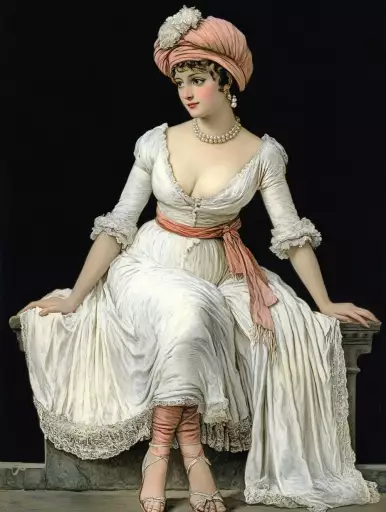Explore the Best AI Image Gallery

Beyond the Canvas: Wearable Tech as a Creative Conduit
The realm of creativity has always been defined by innovation, pushing boundaries and exploring uncharted territories. Today, wearable technology stands at the forefront of this evolution, acting as a powerful conduit for artistic expression, design exploration, and immersive experiences. From smart glasses that overlay digital information onto the real world to haptic suits that translate sound into physical sensations, wearables are transforming how we create, interact with art, and perceive our surroundings.
Redefining Artistic Expression
Wearable technology is empowering artists to transcend traditional mediums and explore new frontiers of creative expression. Augmented reality (AR) glasses and contact lenses allow artists to project their creations onto physical spaces, blurring the lines between the real and virtual worlds. Imagine a painter who can overlay their artwork onto buildings or sculptures in real-time, creating dynamic, interactive installations.
Motion capture technology integrated into wearable sensors enables artists to translate their movements and gestures into digital art forms. Dancers can choreograph performances that generate stunning visual displays, while musicians can control virtual instruments with the movement of their bodies, giving rise to a new genre of embodied music creation.
Enhancing Design Processes
The creative design industry is also embracing wearable tech to streamline workflows and foster innovative solutions. Designers can use AR headsets to visualize 3D models in their physical spaces, allowing for more intuitive prototyping and collaboration. Wearable haptic feedback devices provide designers with tactile sensations, enabling them to test the texture and feel of virtual materials before committing to physical production.
Immersive Experiences
Wearables are playing a pivotal role in creating immersive experiences that transport users to new worlds. Virtual reality (VR) headsets paired with haptic suits offer fully immersive simulations, allowing users to interact with virtual environments and characters as if they were physically present.
In the realm of gaming, wearables enhance gameplay by providing haptic feedback, motion tracking, and even olfactory stimulation. Imagine feeling the impact of a virtual punch or smelling the aroma of a simulated campfire, bringing games to life in unprecedented ways.
Ethical Considerations
As with any emerging technology, wearable tech raises ethical considerations that must be carefully addressed. Privacy concerns arise from the constant collection of user data through wearables. It is crucial to establish transparent data usage policies and ensure user consent for data collection and sharing.
Another important consideration is accessibility. Wearable technology should be designed inclusively, taking into account users with disabilities. This involves developing features that cater to a diverse range of needs and abilities, ensuring that everyone can benefit from the creative potential of wearables.
Future Trends
The future of wearable tech in the creative industry is brimming with possibilities. We can expect to see advancements in miniaturization, leading to even more discreet and comfortable wearables. Integration with artificial intelligence (AI) will enable wearables to learn user preferences and personalize creative experiences.
The convergence of wearables with other technologies, such as blockchain and the metaverse, will unlock new avenues for creative expression and collaboration. Imagine artists creating and selling their work in virtual galleries accessible through VR headsets, or musicians collaborating on global performances through haptic suits that synchronize movements across continents.
As wearable technology continues to evolve, it will undoubtedly reshape the creative landscape, empowering individuals to push boundaries, explore new frontiers, and redefine the very nature of artistic expression. The canvas is no longer confined to physical surfaces; it extends into the digital realm, merging with our bodies, and blurring the lines between reality and imagination.
















](https://images.ai-img.art/thumbnails/150/8aa2589b60ffe3dde30a265a6cac8d4ae71901c658ca48c4344f21436de413fb.webp)



](https://images.ai-img.art/thumbnails/150/bc5b40f43007c984885fc5b035e0fd81d75554a8730895e067565a6b7050524b.webp)



](https://images.ai-img.art/thumbnails/150/00df9b84a8818b4130bce9ca10c0c67ff2bc8952ca0fb5012dafc9b1c6378e67.webp)


](https://images.ai-img.art/thumbnails/150/33a7122c923d87ba243a3afa0b16a930f1603be27b8ac938ff7f4ae4f5140553.webp)

















](https://images.ai-img.art/thumbnails/150/39c6bd41a1282b304a06fb11053bd009750b3879060719b1adb959228dbcd41a.webp)



